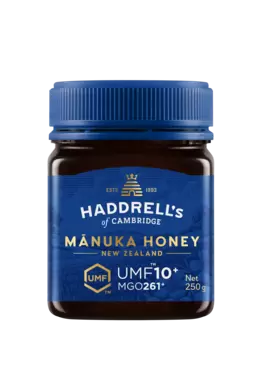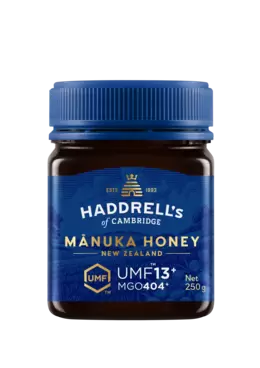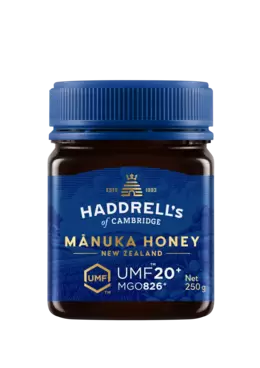What is Mānuka honey?
Mānuka honey is made from the nectar of the native mānuka tree (Leptospermum Scoparium) which is only found in New Zealand. This makes mānuka honey truly remarkable. The combination of the unique nectar from the mānuka flowers and the hardworking bees gives this special honey its unique properties. That’s the magic of mānuka, backed by science.
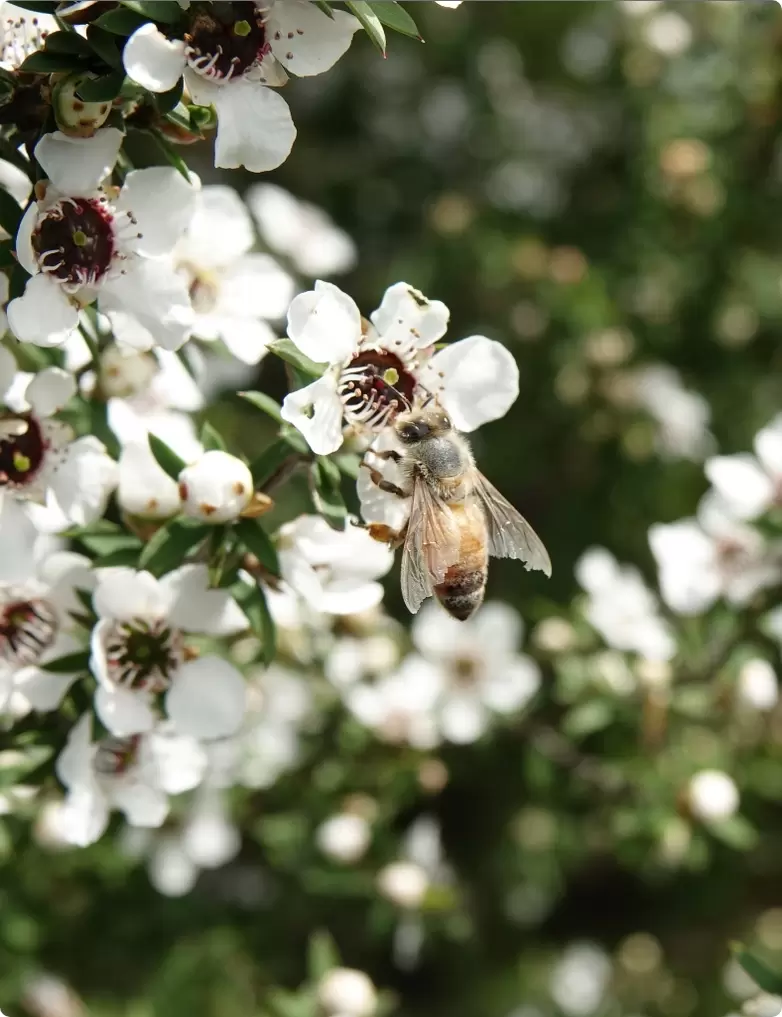
Health Benefits of Mānuka Honey
Natural Energy
Mānuka honey is a great source of natural energy to help fuel your day. Enjoy a spoonful when you need a boost.
Versatile
Sourced from nature, manuka honey has a range of uses and applications.
Unique
Mānuka honey’s rich combination of unique properties makes it very special. Many people use it as part of their everyday routine.
Taste
Mānuka honey has a distinct flavour and rich aroma. Whether it’s a snack, spread, sweetener to ingredient, manuka honey always adds natural sweetness in a delicious way.

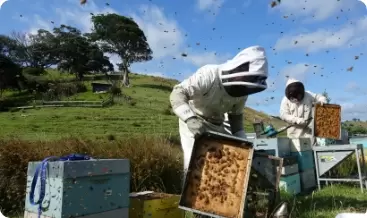
How Mānuka Honey Is Made – The Journey from Flower to Jar
Where the journey begins - Mānuka trees grow in our native forests mostly found in remote regions of New Zealand, as we place our hives in these regions to get the best quality honey. All year round our team takes care of the bees and maintains the hives to ensure they are ready for the mānuka season.
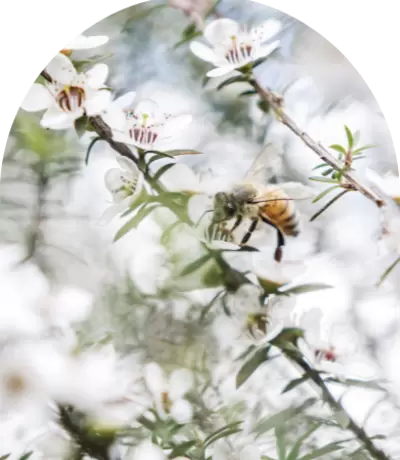
Mānuka Season – A Natural Window of Time
Mānuka flowers bloom for between 2-6 weeks in December, New Zealand's summer season. Our bees collect the unique mānuka nectar from the flowers and bring it back to the hives where they make the honey. Each hive has a number of vertical honey frames which contain honeycomb cells the bees have made.
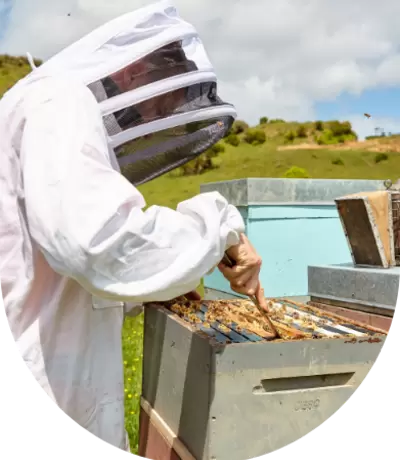
A Labour of Love
The bees deposit the fresh nectar in the honeycomb cells, fan it with their wings to reduce the moisture, and cap each cell with a wax layer to preserve the honey. When hives have reached their full capacity, or when the mānuka flowering season is over, our team collect the hives and bring them back to our extraction plant.
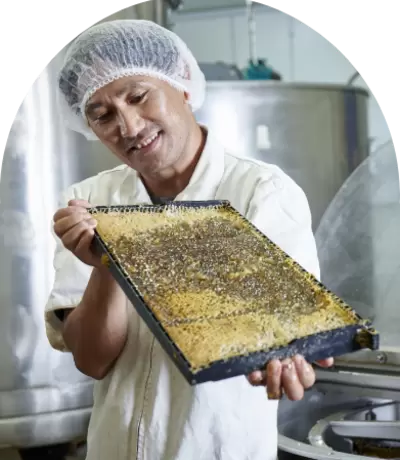
Extracting the honey
Each frame is put in a honey extractor which de-caps the wax layer on the honeycomb cells. The frames are spun using the machine's centrifugal force to extract the liquid honey from the cells.
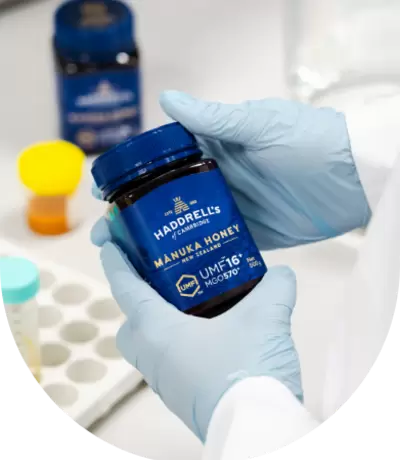
Packaged for honey lovers
The honey is transferred to drums and stored in optimal conditions allowing it to mature. Every batch of Haddrell’s mānuka honey is tested for its unique properties.
Packaging with Guarantee of Origin
Haddrell’s mānuka honey is carefully packaged before being exported the world over for mānuka honey lovers to enjoy a special taste of Aotearoa/New Zealand.
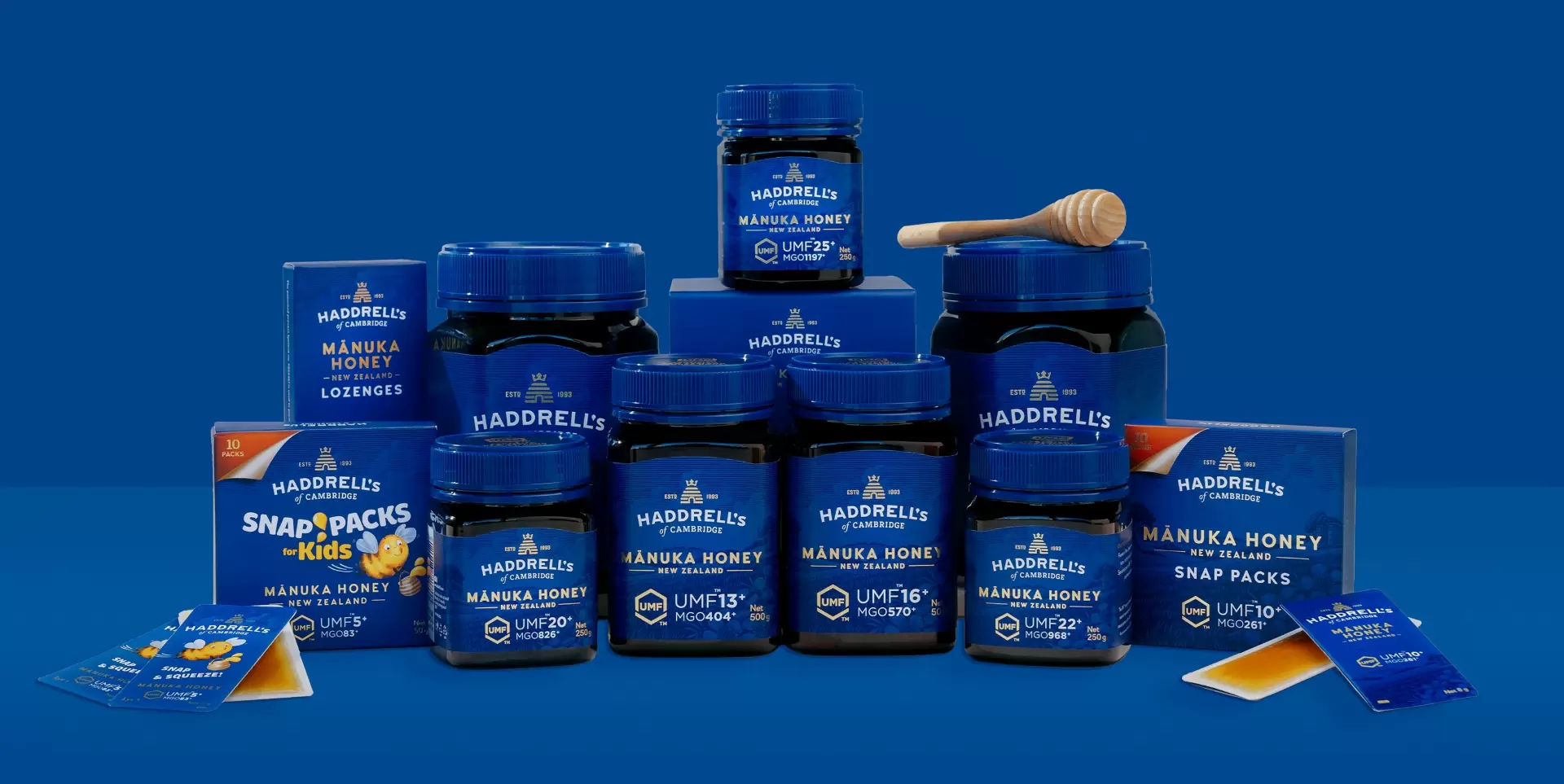
How is Mānuka honey used?
Mānuka honey is enjoyed and highly valued by people all around the world for its special combination of unique properties.
Natural energy
Mānuka honey is a great source of natural energy
Taste
Mānuka honey has a unique taste and is enjoyed by honey lovers around the world
Skincare
Mānuka honey acts as a natural humectant and can be an ingredient in DIY face masks
Soothing
Mānuka honey can be added to make a soothing hot drink

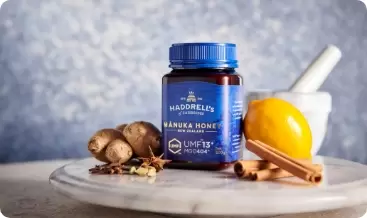
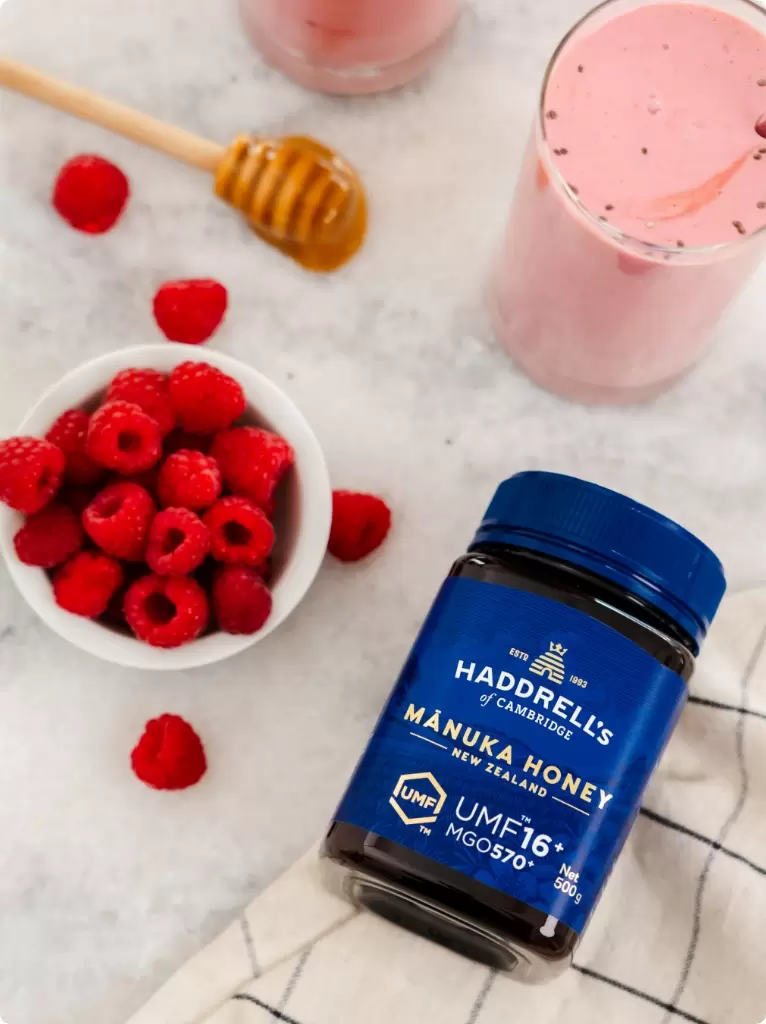
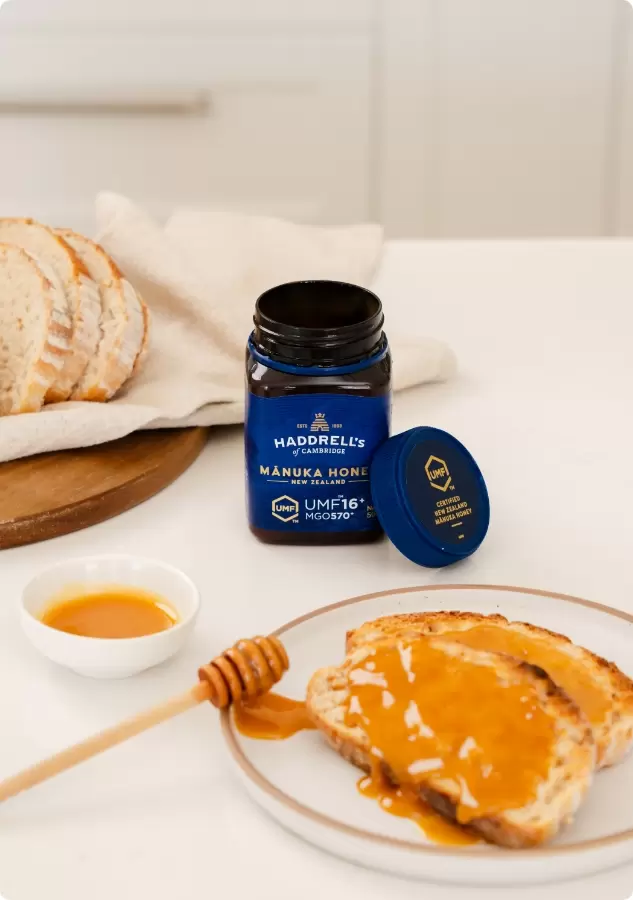


For Skin and External Use
Honey is a natural humectant (retains moisture) and can be used as an ingredient for face masks. Using mānuka honey in a homemade face mask can be a great way to harness its potential benefits for the skin, including its moisturising properties.
Note: If you have sensitive skin, consider doing a patch test behind the ear before applying the mask, to check for any adverse effects. Mānuka honey face masks can be used once or twice a week, depending on your skin's needs. Adjust the frequency based on how your skin responds to the treatment. Always choose high-quality, genuine mānuka honey for skincare purposes. Authentic mānuka honey will have a Unique Mānuka Factor (UMF™) rating, which indicates its potency and quality. It is best to make the face mask fresh and use it immediately, we do not recommend making the mask and storing it.
Mānuka Plantation
Dedicated to our craft, devoted to our future
We have created a mānuka plantation with millions of specially selected mānuka trees adding to the restoration of New Zealand's native forests. This project helps to offset some of the planet’s carbon emissions creating a habitat for New Zealand native birds and helps ensure the best mānuka honey grown and yielded by the bees.
From its inception, Haddrell's has held bee health and environmental sustainability as an underlying principle. Mānuka honey is a unique and precious gift. As beekeepers we acknowledge our responsibility to protect the bees that produce our honey and our role as guardians of our environment.
Frequently Asked Questions (FAQ)
Here are answers to some common questions. If you need more information, feel free to contact us.
Honey is naturally gluten-free and nut-free, and during processing and packaging, we apply strict controls to minimize the risk of allergen contamination. However, please note that we do not conduct regular testing for the presence of gluten or nuts in our honey.
Babies under the age of one should not consume honey. Otherwise, Mānuka honey is considered safe for all children over one year of age, provided they do not have any medical conditions or allergies that would prevent them from consuming honey.
When deciding whether to consume honey during pregnancy, factors to consider include the level of natural sugars, whether the honey is pasteurized, and any potential allergies. It's always a good idea to consult your doctor for personalized advice.
Yes, all Haddrell’s honey is halal certified by the Federation of Islamic Associations of New Zealand (FIANZ).
Our honey comes from hives located in remote areas of Mānuka forests in New Zealand. While it is produced in a pristine, natural environment, it is not officially certified as organic.
Haddrell’s honey is a premium Mānuka brand, packed in New Zealand and certified with the UMF™ quality mark.
Honey is sweeter than white sugar, so you typically need less of it to achieve the same level of sweetness. However, the intensity of sweetness can vary depending on the type of honey, so we recommend experimenting with different amounts to find the ideal balance for your recipe.
While Mānuka honey offers unique properties, it is still a source of natural sugars. For that reason, it’s best to enjoy it in moderation as part of a balanced diet.
Honey is a source of natural sugars. In general, sugars should be consumed in moderation, unless someone has a medical condition that restricts any sugar intake.
Warning: Infants under 12 months of age should not consume honey.
Excessive heat can impact the balance between two natural biomarkers – DHA and MGO. That’s why it’s recommended to store Mānuka honey at a temperature between 18°C and 22°C.
Baking with Mānuka honey is absolutely possible and adds a natural sweetness and rich flavor to your recipes. Depending on your budget, we recommend using a Mānuka honey with a lower UMF™ rating for culinary use.
Mānuka honey is often enjoyed as a snack—by the spoonful or in Snap packs. It's also a popular addition to warm beverages and serves as a natural sweetener in place of sugar. It adds sweetness and aroma to breakfast—spread it on toast, stir it into smoothies, porridge, or cereals. When needed, Mānuka honey is also excellent for cooking and baking.
Storage conditions depend on the local climate. We recommend keeping honey away from direct sunlight and storing it at a temperature between 18°C and 22°C.
Over time, honey does not spoil in a way that poses a food safety risk. The shelf life of our Mānuka honey is determined by the validity period of its UMF™ rating.
Glass is heavier than plastic and can pose a higher food safety risk. Our honey is exported worldwide and packaged in BPA-free PET containers, which are lighter for shipping and therefore require fewer resources.
No, we do not add sugar to our honey. It is 100% natural.
Bees collect nectar from the flowers of the Mānuka plant, which bloom only 2 to 6 weeks during December. This gives bees a very short window to gather nectar.
Hives are placed in remote locations to produce the highest quality Mānuka honey. This requires significant year-round resources—for bee care, hive protection, and harvesting within that short seasonal window. Access to these remote areas is often made more difficult by harsh weather conditions.


